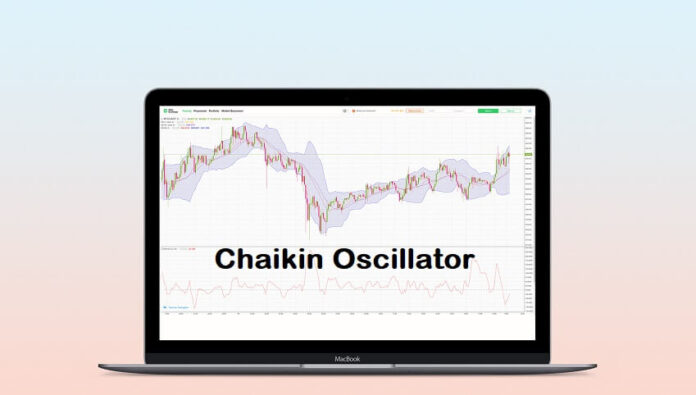The Chaikin Oscillator was developed by Marc Chaikin to compare volume and price levels for an asset. The Oscillator can be used to indicate when an asset is overbought or oversold and thus to indicate upcoming reversals.
To calculate a Chaikin Oscillator chart, a trader first generates an Accumulation/Distribution Line (A/D Line) for an asset. The A/D Line is derived from an index called the close location value, or CLV, which compares high, low, and close prices. If the close price is above the midpoint of the high-low range, the CLV will be positive; if the close price is below the midpoint, the CLV will be negative. A cumulative total of the CLV times the volume of the asset generates the A/D Line, which is high when closing prices and volume is high and low when closing prices and volume are low, indicating pressure in either direction on the asset. The Chaikin Oscillator is then simply a ten-period moving average of asset price less a three-day moving average of the newly-generated A/D Line’s value.
When the Oscillator is at a high value, the A/D Line is at a low value relative to the asset price, indicating that selling pressure is increasing on the asset and that a price reversal is imminent. Conversely, when the Oscillator is at a low value, buying pressure is increasing and an increase in price is equally imminent. Thus investors can use the Oscillator to help determine the appropriate time to sell or buy an asset in order to take advantage of (or to avoid being caught up in) the imminent reversal.
If this article seems useful to your then please click the like button below. You can also share your valuable feedback or ask questions in the below comment section. Also, subscribe to our newsletter for trading-related updates.







